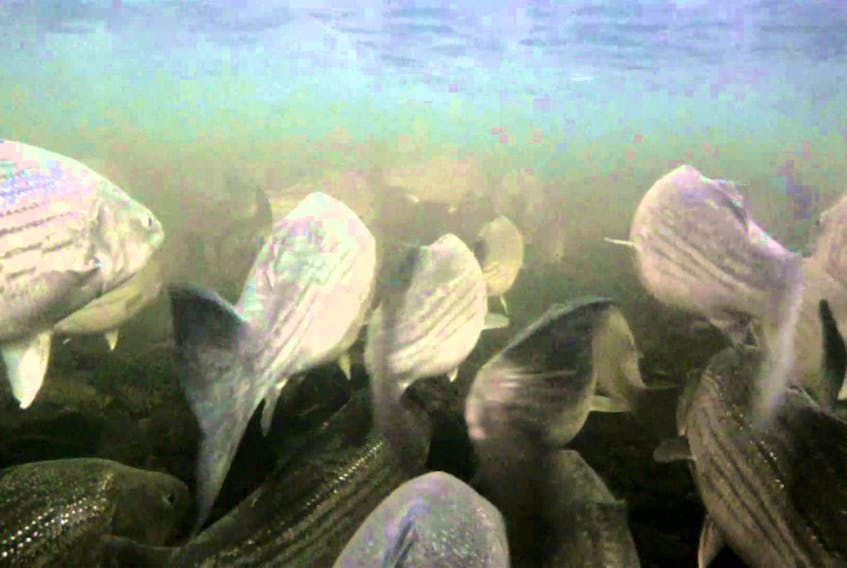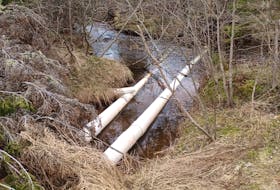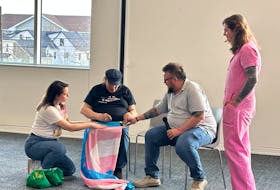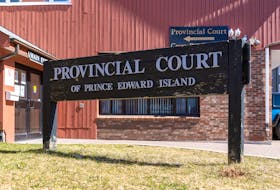BIBLE HILL, N.S. — As you read this, hundreds of thousands of striped bass eggs are drifting in the Shubenacadie River’s murky waters.
They’ll travel back and forth for just four tides before hatching three-millimetre larvae that barely learn to swim before they learn to hunt.
There are a lot of eyes on this predator and this river that drains 1,304 square kilometres of this province’s heartland into the churning Minas Basin.
A new study by researchers at Dalhousie University’s Agriculture Campus in Bible Hill says that Alton Natural Gas LP’s plan to release brine water created by hollowing out underground salt caverns won’t have a significant impact on those eggs or at the critical larval stage.
“All these estuarian species for millions of years have adapted to changing salinities and they move quite freely between fresh water and high salinity water,” said biology professor James Duston, who co-authored the study with Juan Manriquez-Hernandez and Hayden Breau.
The study found that salt brine at the concentration Alton Gas proposes to discharge into the river is not acutely toxic to striped bass eggs or larvae.
The water used to dissolve the salt deposits and create huge underground caverns for gas storage will be held at a brine pond and discharged back into the river on the flood tide.
Salt concentration would not be allowed to exceed 28 grams per litre, five metres from the point of discharge. That’s the highest level of naturally occurring salinity scientists have measured in the river since 2008.
Researchers exposed striped bass eggs and larvae at various developmental stages to varying salt concentrations to measure the ‘median lethal concentration’ – the concentration of brine at which 50 cent of the larvae or eggs are killed by an hour of exposure.
"All these estuarian species for millions of years have adapted to changing salinities and they move quite freely between fresh water and high salinity water."
- Biology professor James Duston, study co-author
“That’s quite conservative in terms thinking about the Alton site and the proposed way the engineers will mix brine with tidal waters,” said Duston.
“It seems (striped bass larvae) may only be exposed to elevations in salinity for maybe as little as 15 minutes.”
Bay of Fundy striped bass is listed as endangered by the Committee on the Status of Endangered Wildlife in Canada, primarily because its only known spawning river is the Shubenacadie.
Historically, it also spawned in the Annapolis River and the Saint John River. But a causeway placed across the Annapolis River and dam built across the Saint John caused those populations to crash.
The population in the Shubenacadie River remains strong.
Those who fish the river – a fleet of 18 driftnetters who float up and down the river in small wooden dories – don’t trust Alton Gas, its engineering or this latest study that it paid for.
“Shad, gaspereau, a healthy eel population, tommy cod in winter that come up and spawn in January right under the ice, smelts, I don’t even know how many species are in that river,” said Evan Densmore, one of the gillnet fishermen.
To him, the Shubenacadie is a complex ecosystem that is poorly understood and a study looking at the impact on one species' larvae in the laboratory doesn't justify the risk.
He points to the failure of the 200-metre channel Alton built into the dyke along the river for the eventual release of brine as evidence that what gets stated in proposals doesn't hold up in the Shubenacadie River.
The fishermen have had allies in their long-running battle from the First Nations and environmental groups who also oppose the project.
In March, the Nova Scotia Supreme Court overruled the approval for the project granted by former environment minister Margaret Miller on the basis that the province had insufficiently consulted the Sipekne'katik First Nation.









